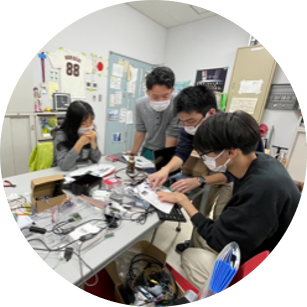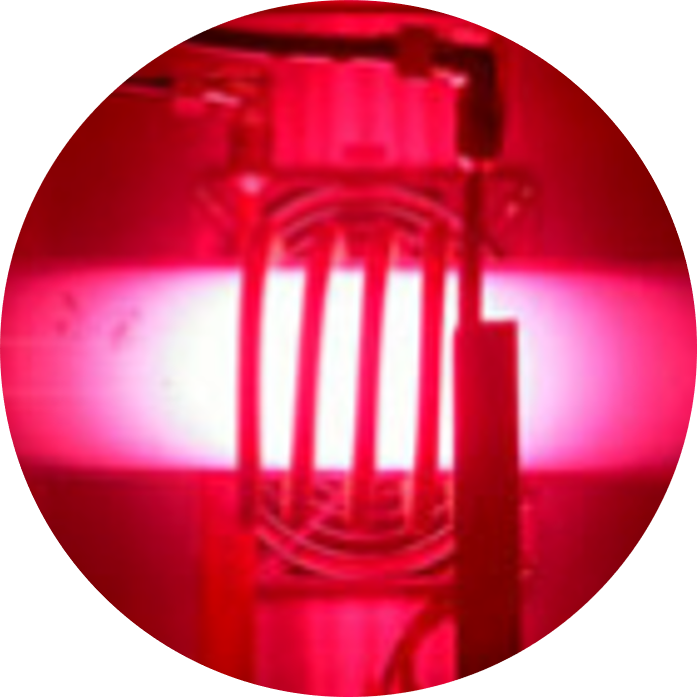About the Suzuki Laboratory
The Suzuki Laboratory's research focus lies in general fluid dynamics and gas dynamics, ranging from low speed to the speed of light (no, this is not a speed mistake!). We are engaged especially strongly in research on solar system exploration, space navigation, and future aircraft.
Our work comprises various topics such as flows around meteorites and atmospheric entry vehicles, low Reynolds number flows over the wings of Mars aircraft, and the fluid behaviour of sand particles. These studies encompass a wide range of flows, from hypersonic flows at or higher than Mach 5 to microfluidic low-speed flows, and are supported by multiple tools such as the Kashiwa Hypersonic and High-Enthalpy Wind Tunnel, CFD computer simulation, deep learning, etc. The world is made up of fluids, not limited to the human body but also including the universe itself, so there are an infinite number of research themes that can be taken up and explored. In the Suzuki Laboratory, we strive to fully deploy our imagination, and encourage students to enjoy themselves to the fullest by freely choosing a research theme and freely conducting their own research.
The Suzuki Laboratory is based in the Transdisciplinary Sciences Laboratory building at Kashiwa Campus, The University of Tokyo.
Seminar
Introduction movie
About the Kashiwa Hypersonic and High-Enthalpy Wind Tunnel
The UTokyo Kashiwa Hypersonic and High-Enthalpy Wind Tunnel is an experimental facility that can produce ultra-high-speed flows reaching speeds of up to 1,200 meters per second, and ultra-high-temperature flows reaching up to 1,000 K. The purpose of this facility is to develop human resources with hands-on laboratory experience of ultra-high-speed and ultra-high-temperature flows, and to push forward the frontiers of ultra-high-speed and ultra-high-temperature fluid dynamics and their applications. Installation work on this facility was completed in March 2006, and ventilation tests were conducted in July 2006. Even since its commissioning, it is being operated as a shared-use facility for hypersonic and high-temperature airflow experimentation by as wide a range of researchers as possible, regardless of affiliation or field.
Pamphlet
Floor plan
Suzuki Laboratory experimental facilities
The experimental facilities of this laboratory are located in the Transdisciplinary Sciences Laboratory building, Kashiwa Campus.
Vacuum chamber
Gun tunnel
Supersonic wind tunnel
Inductively Coupled Plasma Wind Tunnel
When a spacecraft enters a planetary atmosphere or a space shuttle returns from space, the surrounding gas is ionized and becomes plasma due to the strong shock wave generated in front of it. This plasma exerts significant aerodynamic heating on the spacecraft.

In our laboratory, we are exploring how to reproduce such an environment on the ground. We are developing and conducting research on a plasma wind tunnel which employs an induction heating method. Since this method does not use electrodes to generate plasma, clean airflow can be obtained. Using our plasma wind tunnel, we aim to elucidate the physical phenomena underpinning supersonic plasma flows, by means of spectroscopic measurements, probe measurements, and numerical calculations.
Vacuum Chamber
This is a device to reproduce the vacuum of outer space on the ground. Two types of pumps, a rotary pump and a diffusion pump, allow vacuum conditions to a level of 10-2~10-3 to be achieved. Using this vacuum chamber, we are conducting various experiments such as studies on the ablation of carbon heat shields, and studies on the unique pressure distribution created by rarefied jets colliding with flat plates.

Gun Tunnel
The two-stage, high-enthalpy gun tunnel developed in our laboratory can create Mach 10 hypersonic flows. We are employing it to conduct aerodynamic force measurements, temperature measurements via thin-film temperature sensors and thermocouples, and flow visualization experiments with electric discharge. In addition, we are using the facility for research into the impact zone shape of a penetrator-type planetary probe on a small celestial body, by accelerating a scale model of the probe.

Low-Speed Wind Tunnel
A low-speed wind tunnel is installed in Hongo Campus. This facility is used to evaluate the performance of airplanes, and the take-off and landing characteristics of spacecraft. Built in 1938, it is still being used today for research on the vortices generated by the wings of spacecraft during take-off and landing, and for research on electric aircraft.

Supersonic Wind Tunnel
Hongo Campus is equipped with a supersonic wind tunnel, which can produce airflow with a Mach number of 2. The facility is used to investigate the properties of shock waves and the characteristics of supersonic aircraft. It is mainly used for student experiments.






















